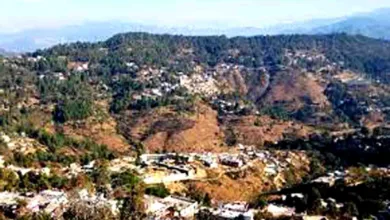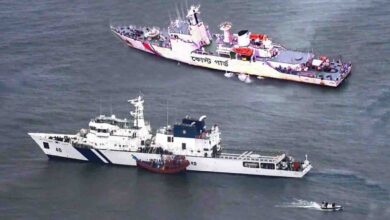Navigating Bangladesh’s Economic Future Post-Sheikh Hasina


After the resignation of Sheikh Hasina, Bangladesh is now searching for its soul while facing fresh political uncertainty which might impact the country’s economic future. Sheikh Hasina has been synonymous with the economic development and growth of Bangladesh for the past ten years. As the country has to now come to terms with a new reality after her resignation, it must now focus on the present and future economic challenges and the opportunities ahead of the country.
This opinion piece will delve into such challenges and opportunities in the next few sections.
Economic Milestones of Sheikh Hasina
Sheikh Hasina’s tenure has marked unparalleled economic success, transforming Bangladesh into one of South Asia’s fastest growing economies. Here are some key highlights:
Strong GDP Growth: Under the leadership of Sheikh Hasina, Bangladesh has been able to realise strong GDP growth, often surpassing 6-7% per annum. This economic growth has mainly been propelled by a dynamic manufacturing industry, especially in textiles and garments. Not only has it pulled export but has offered employment to thousands of people from the economically unprivileged sections of the country’s population.
Reduction of Poverty: The most considerable achievement of the government under Sheikh Hasina has been the drastic reduction in poverty. From over 40% in the early 2000s, it now stands at around 20% over the last many years. The feat has restored millions into better living standards and ameliorated the quality of life for the people of Bangladesh.
Infrastructure Development: Key national infrastructure projects formed the crux of the Hasina government’s economic policy. For example, the completion of the Padma Bridge has facilitated much better access to areas in the country where economic activities through reduced travel time and transport costs have materialised. In addition, these projects had been a venue for employment generation and local economic development.
Digital Bangladesh: Digitisation in the name of ‘Digital Bangladesh’ has changed many dimensions of the economy, from the banking and education sectors to various government services, thereby rendering the processes more efficient, transparent and available in digital form. This has been a technological leap that has not only made operations smoother but has also placed this country among the growing players worldwide in the digital economy.
However, with such a background, the resignation of Sheikh Hasina has led to the following immediate economic concerns that need to be addressed at a rapid pace for peace and stability in the South Asian region.
Immediate Economic Concerns
The immediate concerns which have to be addressed immediately are:
Political Instability: Political instability often breeds economic instability. Investors, both domestic and foreign, may develop cold feet which will result in a slowdown in foreign direct investments and therefore a general deceleration in economic growth. Political uncertainty can have a down-pull effect on business confidence, making it an important factor for the new leadership to build stability quickly and restore confidence for investors.
Policy Continuity: Economic policies and reforms undertaken during the Hasina regime are surrounded by numerous question marks about their continuance. Because of this, any major policy change may disrupt the continuity of projects and plans, leaving the business environment very uncertain. It will be important to communicate an economic agenda to instil and maintain confidence in investors and therefore ensure policy stability for long-term well-being of the country.
Business Confidence: Business confidence may dwindle as business people and investors may sit and wait for clear indications of the new leader’s economic direction and policy agenda. Any perceived lack of clarity or stability in expectations will culminate in delayed investments and can contribute to cautious business practices, further affecting economic growth. Risk-taking can be reduced in such a situation which will further impede long-term investments and returns from the economy, resulting in a spiral of economic downturn.
Long-Term Economic Challenges
Beyond these immediate concerns, several long-term economic challenges need to be met in order to sustain and build on the economic gains made to date:
Economic Diversification: Although the growth of the textile and garment industry has helped Bangladesh grow further, it is also a concern to be over-dependent on a particular industry. A diversified economy can enjoy sustainable growth. The country should have the development of other sectors- for example, technology, pharmaceuticals and agriculture. It will enable the formation of more lines of activities that may or can create employment, diminish economic vulnerability and add general resilience.
Development of Human Capital: The investment in the development of education and skills is imperative for development. Education should be made more effective and accessible especially in the rural areas. With a skilled labour force, productivity will increase with new ideas, leading to long-term growth.
Infrastructure and Urbanisation: Continued investment in key infrastructure areas of transportation, energy and communication is critical. Sound management of urbanisation also encourages sound urban planning so that the population may grow without stifling economic growth. Investment in modern infrastructure can connect, remove bottlenecks and improve business environments.
Environmental Sustainability: Bangladesh is highly vulnerable to climate change and environmental degradation. The country can achieve a resilient economy only through sustainable practices in agriculture, industry and urban planning over the long run. New leadership has to take measures to reduce risks associated with changes in the economic, social, governance and political paradigm in order to secure the lives of people involved in various livelihood activities.
Opportunities for New Leadership
Leadership changes present new opportunities to be able to rise to these challenges by designing innovative strategies and implementing reforms.
Reforms and Innovation:New thinking can bring up new ideas and innovative solutions to meet economic problems. New leadership may bring in governance reforms, decrease corruption and create a positive climate for doing business. It can promote an ambiance for innovation and entrepreneurship within Bangladesh, thereby pulling in investment that will pave the way for economic growth.
Institution Building:Strong, transparent and accountable institutions are the cradle of sustainable economic growth. New leadership should put much emphasis on institution building for the sake of economic stability and predictability. Institutional strengthening is a way to better governance, reduce corruption and establish favorable conditions for business and long- term economic growth.
Inclusive Growth:Economic growth has to trickle down to all sections of society; otherwise, it has little effect on reduction of inequality and improvement in the quality of life at the bottom echelons of the society.
Conclusion
The resignation of Sheikh Hasina has great significance on the economic and political journey of Bangladesh. Undoubtedly, she has provided the leadership to develop an economy, but in this transition, plenty of challenges and opportunities have to be addressed with strategic planning and policy continuity for the long-term economic trajectory of Bangladesh. Resilience, adaptability and commitment measures addressing inclusive and sustainable growth would be the key factors for the future leaders to carry forward the progress of any country in the post-Hasina era. How Bangladesh fares in this new journey is what the international community is eagerly monitoring!
(While Anandajit Goswami is a professor of Economics at Manav Rachna International Institute of Research and Studies (MRIIRS) Preeti Singh is an associate professor of Economics at MRIIRS. Views expressed are personal)






